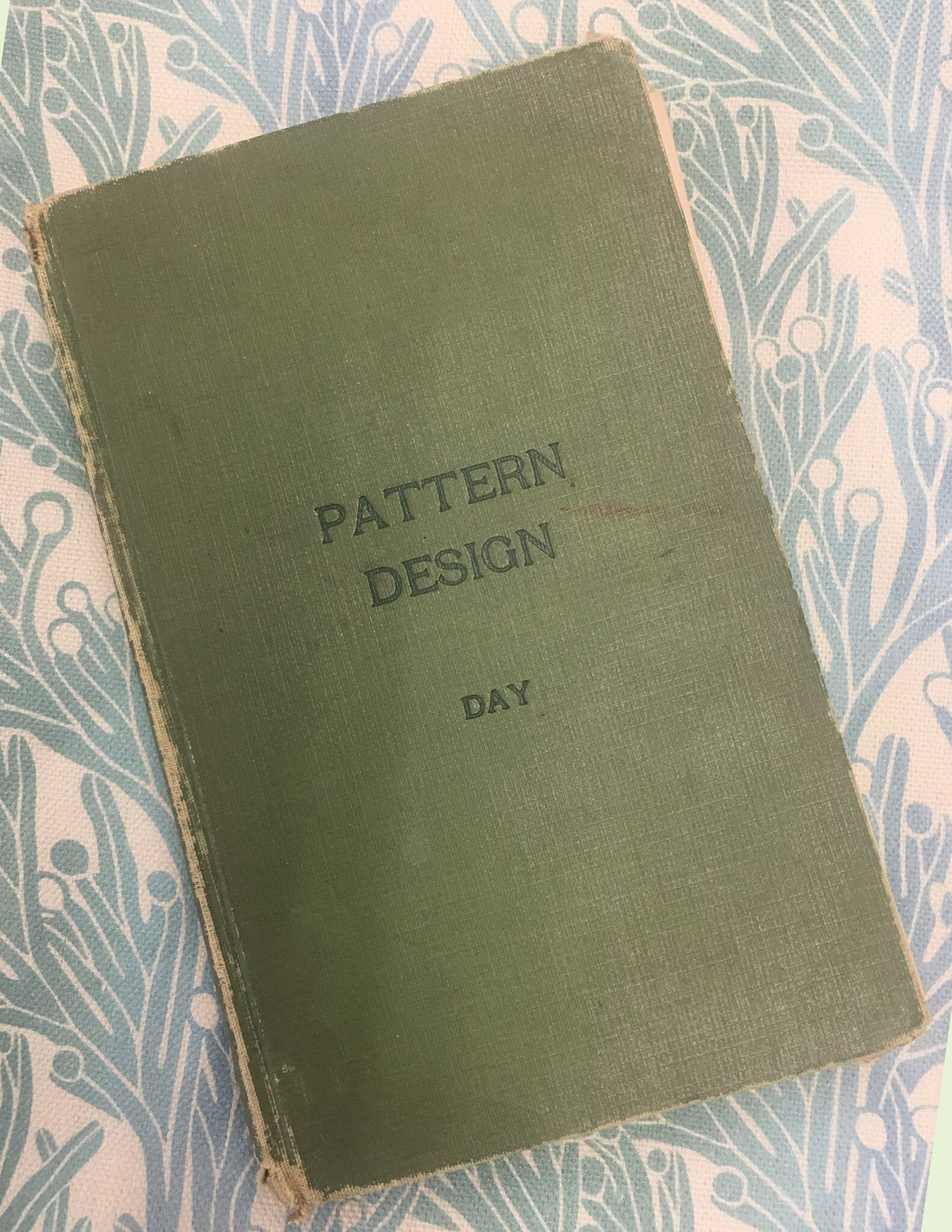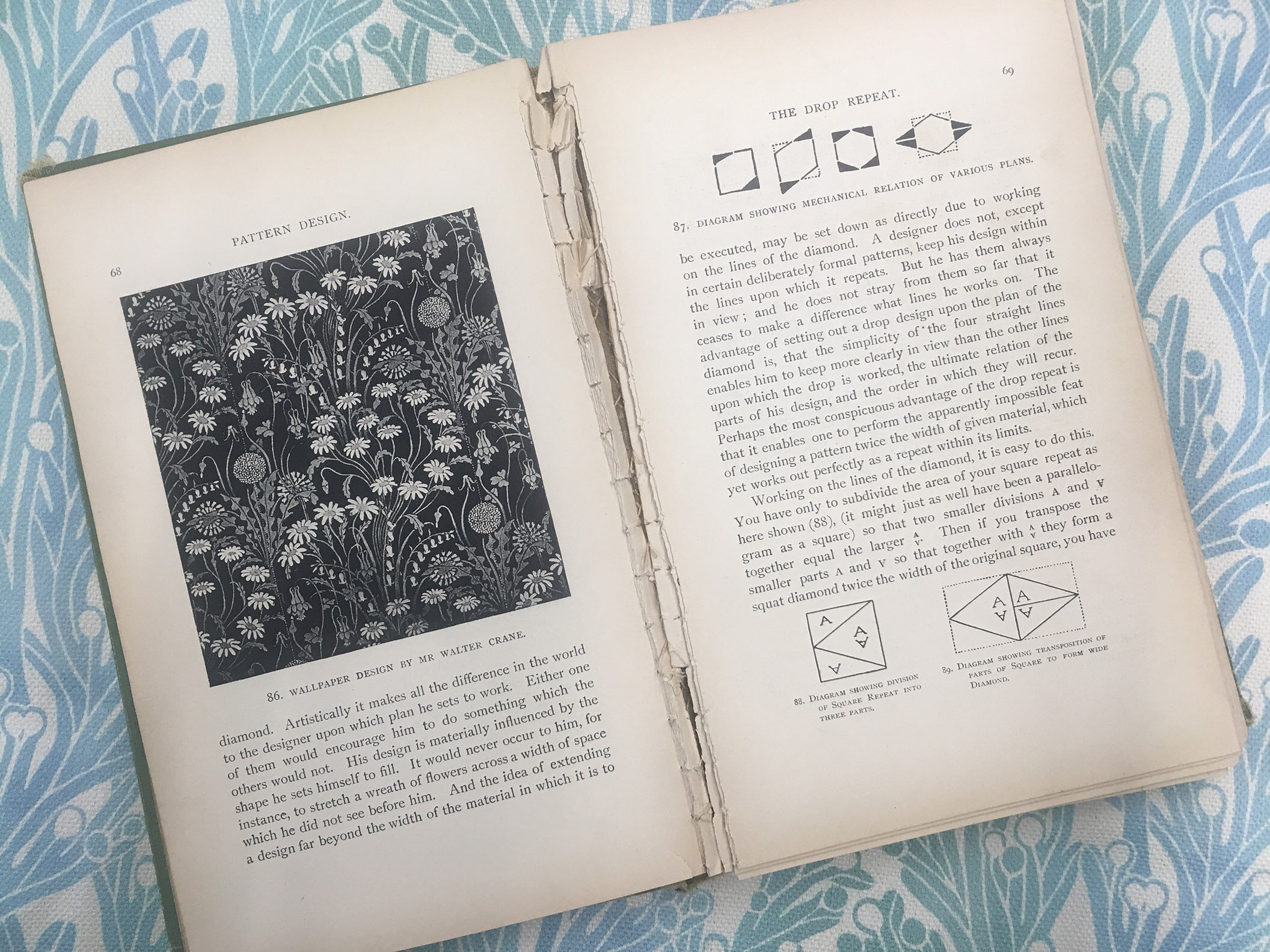Shop Talk: Patterns: Season 2 Episode 2
Dawn and Katie talk about patterns in textile design and architecture/home design.
From the clothes we wear to the décor in our homes, to the natural world and our own DNA, pattern surrounds us. The word “pattern” can be understood differently in textile design and architecture/home design.
Pattern, as it relates to textiles, is the repeating of an element or motif used to create a unique decoration on fabric, such as stripes, checks, geometrics, flora, fauna, etc. These patterns can be woven, knitted, dyed, or printed. A skilled designer might create a pattern where the underlying mathematics of the repeat may not be obvious, instead there is such a beautiful flow that the pattern appears infinite. Consider this quote from a book called Fabrics for Interiors', A Guide for Architects, Designers, and Consumers by renowned designer Jack Lenore Larsen and his co-author Jeanne Weeks: "Pattern enriches an area, gives variety to surfaces, fills spaces, breaks them up, orchestrates a color scheme, and can establish a directional line or movement."
Courtesy of WikiMedia Commons
The famous 19th century English textile designer and poet William Morris observed the natural world first hand to gain a basis for his designs, and insisted on learning the techniques of production prior to producing a design. Once called "the single most important figure in British textile production,” his patterns were hypnotically beautiful, based in nature and with a strong geometry of forms. His first wallpapers, were inspired by English gardens and hedgerows.
Visual patterns in nature, however, are often chaotic, rarely exactly repeating, and often involve fractals. And this is where things get weirdly wonderful. If you've never watched the hypnotic images of patterns in the Mandelbrot series, you might enjoy this very trippy video: Benoit Mandelbrot - the father of fractal geometry. Pattern at its most psychedelic!



A favorite quote from a treasured book in Dawn's library, Pattern by Lewis Day, 1903 reads: "Take any form you please and repeat it at regular intervals, and, as surely as recurrent sounds give rhythm or cadence, whether you want it or not, you have pattern. It is so in nature. The daisies make a pattern on the lawn, the branches of the trees above, the clouds that mottle the blue heavens by day, the stars that diaper* their depths by night, all make perpetual pattern."
In architecture/home design, “pattern” can be understood a few different ways. One common use applies to architectural pattern books which eventually evolved into mail-order catalogs like the Sears, Roebuck and Co. kit houses from c. 1908 - 1940. Pattern in this sense applies to a model or reference example of a specific design type or style.


Perhaps the first architectural pattern book dates back to The Ten Books on Architecture from the 1st century B.C. by Roman architect/engineer Marcus Vitruvius Pollio. Amazon writes of Vitruvius, “For hundreds of years, the specific instructions he gave in his ‘Ten Books on Architecture’ were followed faithfully, and major buildings in all parts of the world reveal the widespread influence of his precepts.”
Other often referenced architectural pattern books are those of the 18th and 19th centuries by carpenters and builders that helped popularize and democratize detail standards related to specific building styles. Some examples of these are Asher Benjamin’s The American Builder’s Companion c. 1806, Owen Biddle’s Biddle’s Young Carpenter’s Assistant c. 1805, and Minard Lefever’s The Modern Builder’s Guide c. 1833.
A notable pattern book in Katie’s collection is Architectural Details from the Early Twentieth Century: A Book of Traditional Details by Philip G. Knobloch, originally printed in 1931 and reprinted in 1991. Based on drawings by well-regarded architects of the era, the plates in Knobloch’s book made quality design more accessible to the trades and the public, and thus more prevalent.




Beyond detail models or examples, Patterns in architecture/home design can refer to larger-scale patterns such as patterns of living or patterns of use. These are largely the types of patterns that are explored in Pattern Language c. 1977, by Christopher Alexander, Sara Ishikawa, Murray Silverstein, Max Jacobson, Ingrid Fiksdahl-King, and Shlomo Angel.
Of course, on another level, patterns in architecture/home design can also refer to patterns of repeated design elements, such as repeated windows/doors, trim details, finish materials, surface treatment, furnishings and fixtures, color, etc.
At their core, patterns — in both textile design and architecture/home design — share the concept of “repeat.” Whether the repeat is a specific motif that recurs in a textile design or a repeated iteration like those made possible by architectural pattern books, repeat is essential to pattern making. Repeats abound in the natural world, including within us, and seem to go hand-in-hand with being human and comfortable within the world around us.








